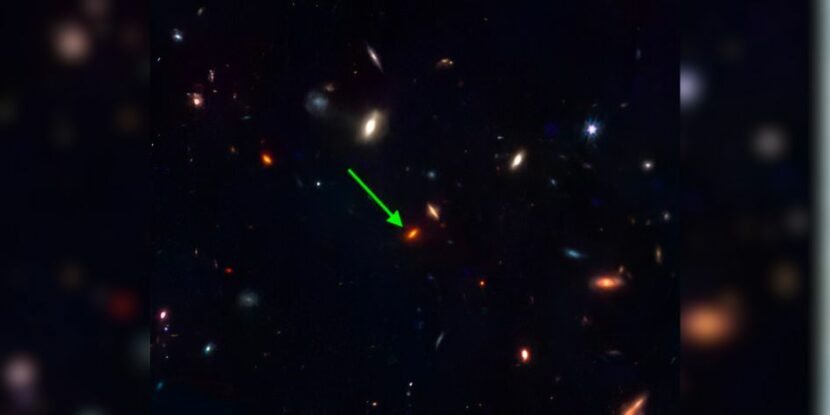According to a recent study published in Nature, astronomers utilizing the James Webb Space Telescope (JWST) have discovered an extremely old, massive quiescent galaxy that confounds the current understanding of galaxy formation. The galaxy, known as ZF-UDS-7329, formed only 800 million years post-Big Bang and possesses more stars than the Milky Way. Unlike other galaxies, it appears to have formed without the influence of dark matter’s gravitational pull, which scientists believed — until now — was impossible.
“Galaxy formation is in large part dictated by how dark matter concentrates,” said Claudia Lagos, an astronomer at the International Center for Radio Astronomy Research and co-author of the study, in a statement. “Having these extremely massive galaxies so early in the universe is posing significant challenges to our standard model of cosmology.”
Dark matter, despite being invisible, is believed to account for a quarter of the universe and govern the shape and formation of large cosmic entities like galaxies. Astronomers theorize that the primordial galaxies formed around accumulations of dark matter known as dark matter halos, which attracted gas and dust from the Big Bang, leading to the creation of stars and galaxies.
The existence of ZF-UDS-7329, dating back 11.5 billion years as initially observed by the researchers and further evaluated via a detailed spectral analysis, challenges this prevailing theory. The study revealed the galaxy’s stars formed another 1.5 billion years in the past, a timeframe in which the vital dark matter halos should not have had sufficient time to form. According to study co-author Themiya Nanayakkara, an astronomer at Swinburne University of Technology, these kinds of discoveries “push the boundaries of our current understanding of how galaxies form and evolve.”



















